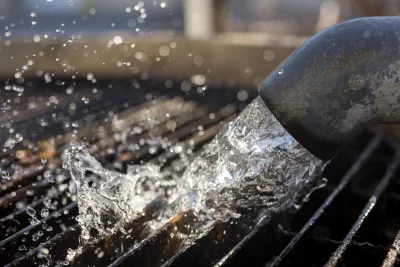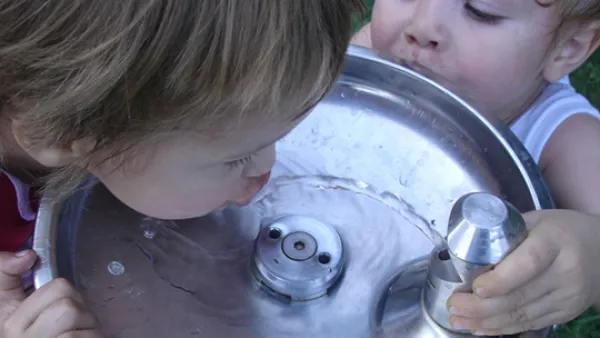The ambitious Pure Water project is designed to reduce the city's dependence on imported water and limit the amount of sewage dumped into the ocean.

After "a lengthy process featuring thorny lawsuits, complex labor deals and an aggressive public education campaign to fight the derogatory early nickname 'toilet to tap,'" San Diego has launched its biggest-ever infrastructure project, "a sewage recycling system that will boost local water independence in the face of more severe droughts caused by climate change." As David Garrick reports, "this fall will mark the start of construction on the system’s three most essential projects," "a $356 million sewage purification plant in western Miramar, a $123 million pipeline through much of Clairemont that will bring sewage to that plant, and a $110 million Morena Boulevard pump station to make that possible."
In response to protests by local residents who worry about disruptions to their neighborhoods, the city "created special 'working groups' to keep residents up to speed on activity." The project, named Pure Water, "will produce 34 million gallons per day of potable drinking water. A larger second phase, slated for completion in 2035, will add another 53 million gallons," reducing San Diego's imported water from 85 percent to under 50 percent.
"In addition to making San Diego’s economy less vulnerable to droughts and sharp cost increases for imported water, the project also will sharply reduce the amount of sewage the Point Loma Wastewater Treatment Plant emits into the ocean," an important selling point since the city faced "constant pressure from federal officials to spend billions upgrading the Point Loma plant to meet the standards of the Clean Water Act."
The project is also expected to provide 4,800 jobs through "a union-friendly Project Labor Agreement," the first in the city's history.
Los Angeles, Orange County, and other local governments across California are implementing their own water recycling projects in a bid to reduce Southern California's water imports and boost the state's water security as it prepares for intensifying climate change and deeper drought.
FULL STORY: San Diego launching Pure Water, largest infrastructure project in city’s history

National Parks Layoffs Will Cause Communities to Lose Billions
Thousands of essential park workers were laid off this week, just before the busy spring break season.

Retro-silient?: America’s First “Eco-burb,” The Woodlands Turns 50
A master-planned community north of Houston offers lessons on green infrastructure and resilient design, but falls short of its founder’s lofty affordability and walkability goals.

Delivering for America Plan Will Downgrade Mail Service in at Least 49.5 Percent of Zip Codes
Republican and Democrat lawmakers criticize the plan for its disproportionate negative impact on rural communities.

Test News Post 1
This is a summary

Test News Headline 46
Test for the image on the front page.

Balancing Bombs and Butterflies: How the National Guard Protects a Rare Species
The National Guard at Fort Indiantown Gap uses GIS technology and land management strategies to balance military training with conservation efforts, ensuring the survival of the rare eastern regal fritillary butterfly.
Urban Design for Planners 1: Software Tools
This six-course series explores essential urban design concepts using open source software and equips planners with the tools they need to participate fully in the urban design process.
Planning for Universal Design
Learn the tools for implementing Universal Design in planning regulations.
EMC Planning Group, Inc.
Planetizen
Planetizen
Mpact (formerly Rail~Volution)
Great Falls Development Authority, Inc.
HUDs Office of Policy Development and Research
NYU Wagner Graduate School of Public Service




























